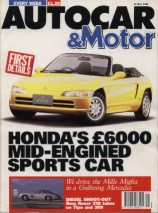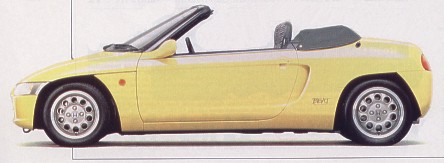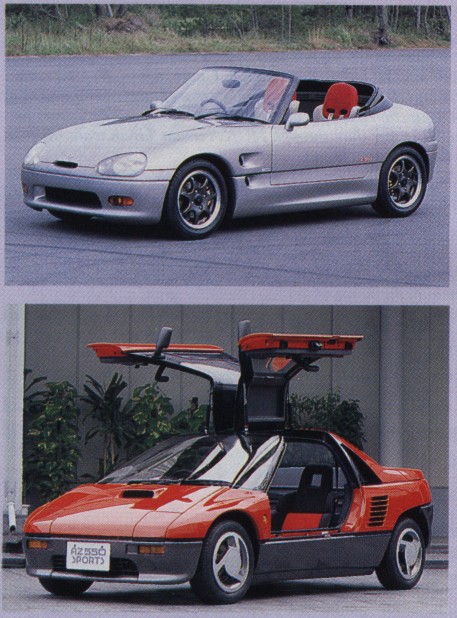
& Motor
4917
Bericht
aus
Autocar
& Motor
Vol 188 No 8
(4917)
22 May 1991
S. 4 - 5

| Honda's baby NSX supercar First details Honda's £ 6,000 Mid-Engined Sports Car
Smaller than a Metro, but packing all the technology of an NSX, Honda's Beat is set to become the Japanese cult car of the '90s. Its specification is another landmark for Honda; despite being 9 ins shorter than the Metro and powered by a complex mid-mounted 12-valve three-cylinder 656 cc engine, it sells in Japan for the equivalent of £ 6,000. That's expensive for its class but its looks and specification seem certain to create demand. The Beat is set to spawn a whole generation of tiny, highly specialised sports cars, which are ridiculously cheap by European standards, but are only available in Japan. This is the first of a new wave of minicar bombshells for the '90s to be launched in Japan, but Honda is no stranger to miniature sports cars. The Beat evokes memories of the S600/S800 junior sportsters of the '60s. The Beat scores over its competitors with its rear drive chassis and pretty, minimalised looks. Its implied links to the NSX supercar and Formula 1 technology can only help it in the marketplace. However, Honda's partner Rover has had no imput in the project and at no stage was the car considered as an MG. Rover's official line is "no comment", but insiders say the company was never contacted and that the MG project is one on which Rover will not co-operate with Honda. In any case, highly charismatic as it is, the Beat is too specialised to compete in the European or North American markets. The two-seater soft top is powered by a high-revving, three cylinder, all alloy transverse engine. Output is 64 bhp, the maximum allowed under the Japanese tax-related K-car rules, which limit power and size for city cars. The Beat's normally aspirated, sohc four-valve engine, while based on Honda's Today minicar, has a new form of throttle valve intake technology, dubbed MTREC (Multi Throttle Responsive Engine Control System), and PGM-FI injection. MTREC has a computer-controlled butterfly valve inside the inlet tract of each cylinder, rather than just one butterfly covering all three cylinders as in the Today engine. The result is a 656 cc 12-valve engine which produces its 64 bhp peak power at 8,100 rpm and 44 lb ft of torque at 7,000 rpm. The Beat's overall length is 129.7 ins, width is 86.7 ins and heigth is 46.3 ins.
|
||||||
RIVALS
|
||||||



